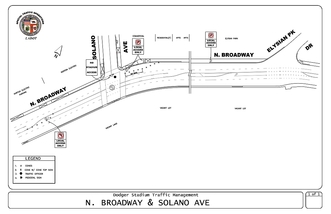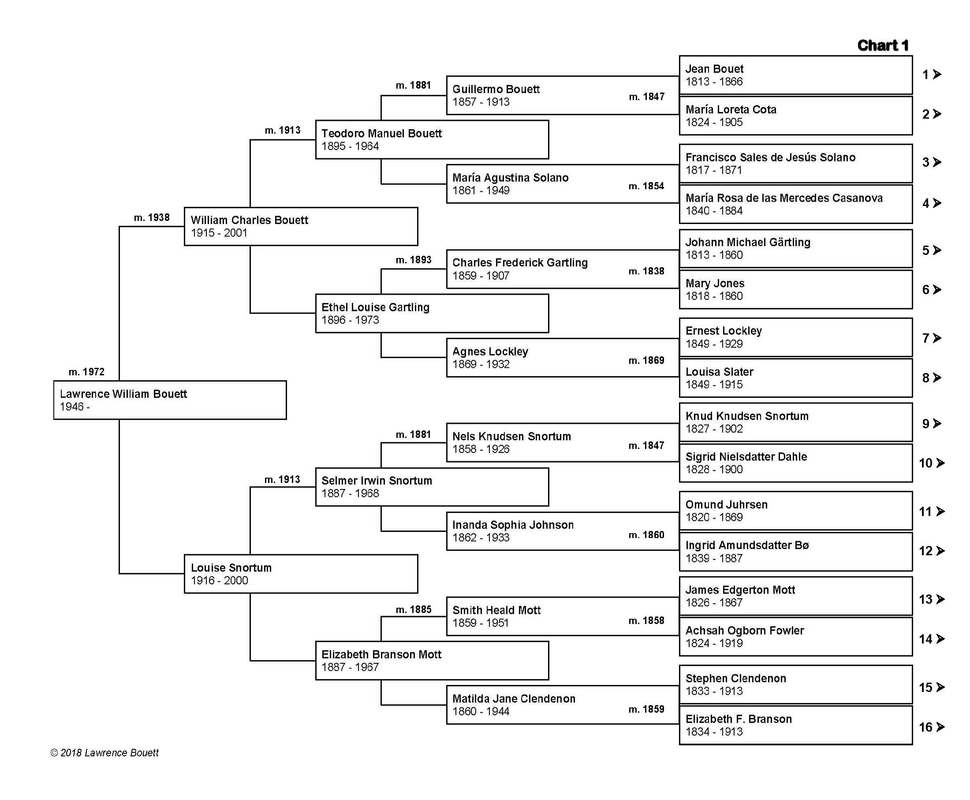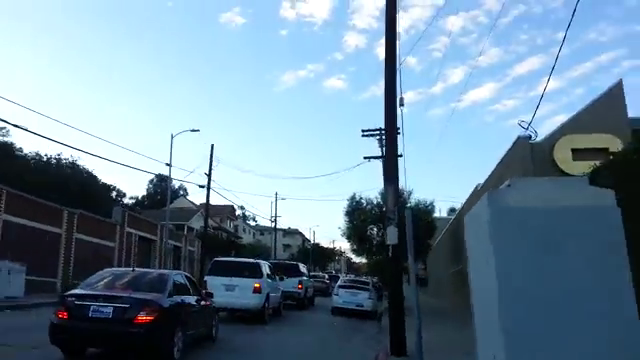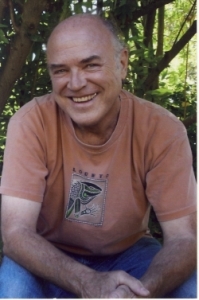 Why Solano Avenue and Casanova Street should never be used for access to Dodger Stadium Dodger Stadium traffic in Solano Canyon, especially on Solano Avenue, but also on Casanova Street — which has been renamed Academy Road north of the Pasadena Freeway (CA 110) — makes life for many Solano Canyon residents an unbearable Hell. We are used to thinking of driving in terms of miles-per-hour; but on game days in Solano Canyon, it's better to think of driving in terms of minutes-per-block — as in 20 minutes-per-block, or even more, according to testimony from more than one resident. Residents complained for years to the Dodgers, the City Council, the City Department of Transportation (DOT), and the Los Angeles Police Department (LAPD) with absolutely no relief. Finally, in 2013, a plan was put into place whereby no stadium traffic was allowed entry onto Solano Avenue from North Broadway. Note that the plan was designed by the City and bears the imprint of the Department of Transportation (DOT). The basis of the plan is simple:
It seemed like a good plan: residents could use Solano Avenue for access to their homes, but fans heading to Dodger Stadium could not; after all, the Downtown Gate is the preferred access to the stadium. Time for a (tiny) bit of history When Alfred Solano subdivided Solano Canyon in 1888, he imagined primary access to be from Solano Avenue, so he designed it 60' wide, including sidewalks, and with enough width that wagons could park along the street. Casanova Street, which was a minor street, was designed only 30' wide — wide enough for two wagons to pass, but with no space for 'parking'. Those two streets have the same dimensions today, even though Alfred, in his wisdom, petitioned the City in 1894 to widen Solano Avenue, a petition that was tabled at the time and ultimately never acted upon. Jump forward to the 21st-Century This is what Solano Avenue looks like on Dodger game days: Now let's imagine — Heaven forbid — that a man who lives on Solano Avenue has a heart attack. He thinks he can make it, but he calls 911. At the same time, a fire starts on the stove in the kitchen of a home on Casanova Street; that family, too, calls 911, then tries to put out the fire. Fire trucks and EMT ambulances rush to the locations, with lights flashing and sirens screaming. Cars — larger ones, like SUVs and some full-size cars — are about six feet wide, while many cars are more narrow. Fire trucks and ambulances, on the other hand, are a full eight feet wide or more. The paved surface of Solano Avenue is less than 40'. If two, six-foot-wide vehicles are parked on either side of the street, and they are each 18" from the curb, which is within the law, and two, six-foot-wide vehicles are driving on the street at the same time in opposite directions, then even though there is physically enough room for them all, most drivers do not feel comfortable driving very close to another vehicle. In practice, it has been proven that any object within about six feet of a vehicle makes most drivers uncomfortable. The point is that it would be extremely difficult — if not impossible — for an emergency vehicle, let alone several emergency vehicles, like a fire truck and an ambulance, to negotiate within the narrow confines of Solano Avenue, and literally impossible to negotiate the even-narrower Casanova Street. We can only hope for the best for that man who had the heart attack, and trust that the kitchen fire on Casanova Street was put out by the family, because in neither case would an emergency vehicle be able to provide a timely response to the emergency. NOTE: In the slide show below, each image is fully-captioned. Advance the slideshow manually using the arrows and hover your mouse momentarily over the large image to read its caption. Captions will not appear if the slide show is 'played'. Epilogue: The 2013 DOT traffic plan for Solano Avenue on Dodger game days is no longer being used; it was never rigorously enforced.
To watch the six-minute amateur video from which these images were taken, click here. |
About the AuthorLawrence
Bouett is a retired research scientist and registered professional
engineer who now conducts historical and genealogical research
full-time. A ninth-generation Californian, he is particularly interested in the displacement of the nearly 1,100 families that lived in the Chavez Ravine communities of la Loma, Palo Verde, and Bishop to make way, ultimately, for the construction of Dodger Stadium. His ancestors arrived in California with Portolá in 1769 and came to Los Angeles with the founders on September 4, 1781. CategoriesArchives
January 2018
|
Follow us!
What our friends are saying
"Thank you for such an informative site which highlights the plight of those relocated from Chavez Ravine. My stepfather was a happy child growing up in the Palo Verde area. He had many stories about living in the area and working at the [Ayala] store."
"Wow that is awesome thank you"
"Dodger Stadium will always be a monument to the displacement of three entire communities"



 RSS Feed
RSS Feed